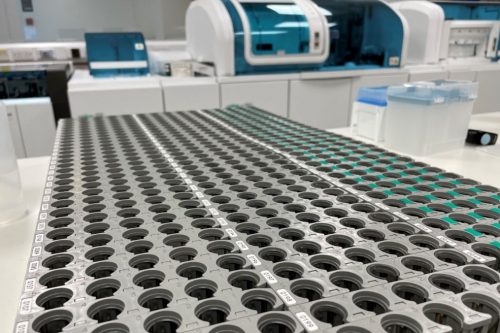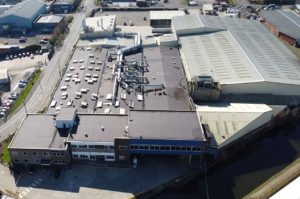North West enjoys leap in levels of lab leasing, new report shows

The North West has seen record levels of laboratory leasing, according to real estate analytics company CoStar.
The leasing of space tripled within a year, including a surge in activity in the North of England over the past two years.
The research showed that, over the past year, the expanding UK life sciences sector has driven a strong recovery in laboratory space leasing.
Rolling 12-month take-up grew to more than one million square feet at the end of 2024, a three-fold increase over the year.
Activity was concentrated in the so-called Golden Triangle of Oxford, Cambridge, and London, which accounted for more than 60% of all deals, consistent with the annual average over the last decade.
The science parks around Oxford and Cambridge continued to attract healthy demand from firms such as BioNTech and Novo Nordisk, which acquired large units at the Cambridge Biomedical Campus and Oxford Science Park, respectively.
However, the past two years have seen a surge in activity in the north of England, which accounted for 18% of laboratory space leased in the UK, well above the five-year average of 13%.
Pharmaron Biologics UK’s acquisition of 130,000 sq ft at Liverpool’s Estuary Commerce Park as part of its phased expansion into the area was the stand out deal.
Market participants cite rising rents across the south of England as one of the factors driving occupiers, particularly those in life sciences, to consider cheaper northern markets.
Dace Dimza-Jones, national life sciences inward investment specialist, UK Government, said: “The north of England presents an excellent environment for innovative and innovating companies to establish their business.
“The region’s connected life sciences ecosystem enables businesses to develop, test, and evaluate their products and services efficiently, fostering innovation amongst a diverse patient population.”
Dace added: “The cost of setting up a business in the north is highly attractive, and the Government support through investment zones, free ports, and local grants further facilitates business growth and scale-up opportunities for companies.”
Government support, increased investment, a strong research base, and global demand for innovative healthcare solutions, have fuelled demand for laboratory-enabled space in the UK over the past few years.
This demand looks set to continue after the Autumn Budget 2024 underscored the Government’s commitment to the sector.
Chancellor Rachel Reeves announced a record £20.4bn investment in research and development for 2025.
This includes the establishment of the Life Sciences Innovative Manufacturing Fund (LSIMF), starting with £70m in grants and potentially expanding to £520m to attract major manufacturing investments.
In addition, the UK’s re-association with the Horizon Europe programme marked a pivotal shift, granting UK researchers access to an €82bn funding pool.
This move is expected to invigorate scientific collaboration and innovation across the continent, reinforcing the UK’s position in global research initiatives.
However, the shortage of quality laboratory space often cited by life sciences operators is unlikely to improve over the coming years.
The final quarter of 2024 was the first since 2012, during which no construction commenced, and there have been no new construction starts so far in 2025.
As a result, construction levels have started to fall, although nearly three million sq ft of space is still being built, well above the five-year average of 1.7 million sq ft – almost half of the space currently under construction has already been let.
While debt and construction costs remain high, life sciences occupiers will need to move increasingly early to ensure their accommodation needs are met.
Lab space stands apart from typical workplaces with its purpose-built mechanical and structural systems – and it often commands a rent premium compared with similar properties in the same market.








